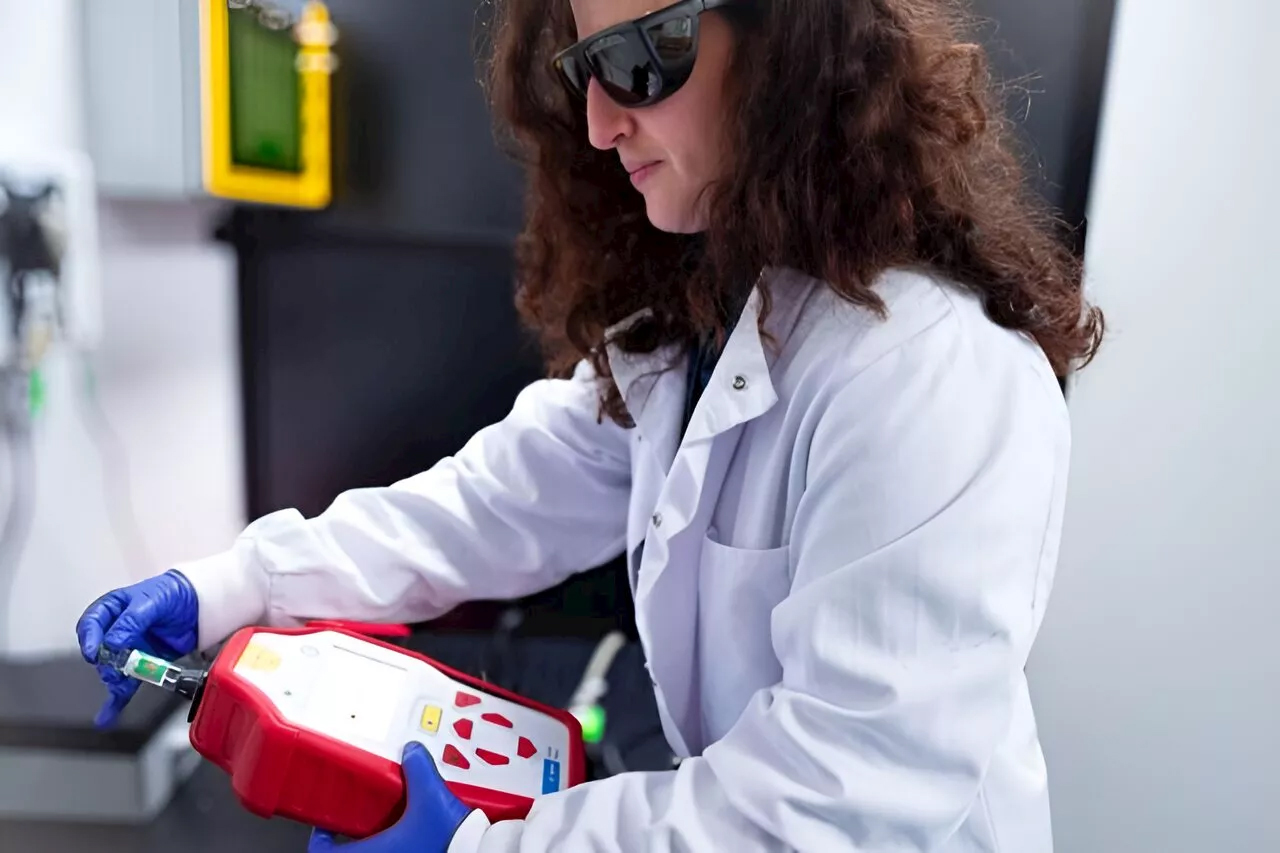An international research consortium has shown how a handheld instrument from Agilent Technologies can be used to detect counterfeit vaccines while still in their vials. [Image: CLF / UK STFC]
An international consortium of academic, government and industry research labs has unveiled a handheld system that can detect counterfeit vaccines for COVID-19 and other diseases (Vaccine, doi: 10.1016/j.vaccine.2023.10.012). The instrument uses the laser-based method of spatially offset Raman spectroscopy (SORS) to chemically distinguish fake vaccines from the genuine article.
The SORS technique was developed at a UK-based spinoff acquired six years ago by the international laboratory instrument company Agilent Technologies, one of the consortium members.
Profiting from a pandemic
No situation is sufficiently dire to rule out opportunities for nefarious profit. It wasn’t long after the unveiling of revolutionary new mRNA vaccines against COVID-19 that counterfeit versions of the vaccines started showing up on world markets. Such fake medications are a long-standing scourge; historical examples range from nostrums peddled during the bubonic-plague outbreak in the 17th century to the post–World War II falsification of penicillin dramatized in the classic film The Third Man.
Given the rapid growth in demand for COVID vaccines, stemming the tide of fake versions has had something of a “whack-a-mole” character. Current analytical techniques can be carried out only by specialized laboratories, according to a press release from the Central Laser Facility (CLF) of UK Research and Innovation’s Science and Technology Facilities Council (STFC). A more efficient, broader-based approach to screen out fake vaccines, the CLF maintains, is “critically important” both for public health and to avoid “undermining trust in vaccines.”
The SORS technique
In 2020—even as the new COVID vaccines were still being tested—representatives of the World Health Organization (WHO), Agilent, STFC and partners including three UK universities, the Kavli Institute for Nanoscience Discovery and the Serum Institute of India (SII) came together in a research consortium to work on a solution for vaccine counterfeiting. The consortium focused on SORS, a technique already widely used to test analytes in bottles and to screen for hazardous substances.
[Image: Agilent Technologies]
SORS is a flavor of Raman spectroscopy that uses a specific offset geometry between the laser and detector, rather than the back-scattering setup of conventional Raman sensing. The offset geometry, coupled with multiple measurements, allows one to distinguish between the Raman signature of a container, such as a vaccine vial, and the weaker but more important signature of what lies within—even if the container itself is opaque to visible light.
The SORS technique was pioneered in the early 2000s by Pavel Matousek and colleagues at SFTC’s Rutherford Appleton Lab near Oxford, UK. In 2006, SFTC spun out a new company, Cobalt Light Systems, that aimed to commercialize SORS and that started building an array of SORS instruments.
Cobalt was acquired in 2017 by Agilent for around US$52 million. Agilent has since extended the product line, with a particular focus on applications in raw-materials identification for pharma and hazardous-materials detection in settings such as airport security.
Proof-of-concept tests
In the recently released proof-of-concept paper in Vaccine, members of the consortium used a modded version of an existing Agilent SORS instrument, Resolve, which included an 830-nm excitation laser operating at 475 mW. The team put the instrument to work measuring vials of 45 genuine samples of the SII’s Covishield vaccine, to extract a “molecular fingerprint” of the genuine vaccines. The researchers then ran the same tests on fake surrogates prepared using a variety of counterfeit-vaccine formulations that have cropped up on the black market.
The Agilent Technologies Resolve SORS instrument used in the study. [Image: CLF / UK STFC]
The team found that the SORS tests—each of which involved a 25-second spectral measurement, followed by computer analysis—detected almost all of the fake vaccines in closed vials with 100% specificity and sensitivity. (The one exception was a sucrose-based fake, for which sensitivity was only 83%.) As the approach is based on already established handheld tools that require little operator training, the team argues that it “can be employed relatively easily within the distribution chains of vaccines globally.”
The CLF press release noted that the method tested in the recent study “may also be used for authenticating other vaccines, liquid and solid medicines” beyond just those battling the COVID virus. Indeed, Agilent’s marketing director for field detection technologies—a man with the singularly Raman-appropriate name of Rob Stokes—said the approach “not only advances vaccine authentication but also sets the stage for future high-sensitivity analysis within sealed containers across diverse fields.”



